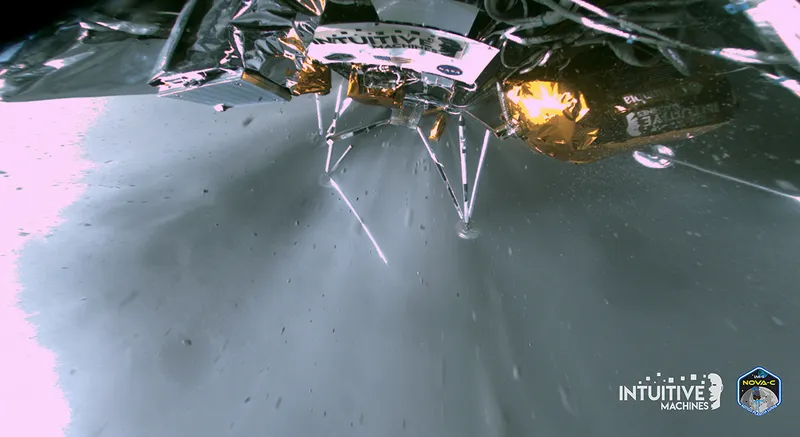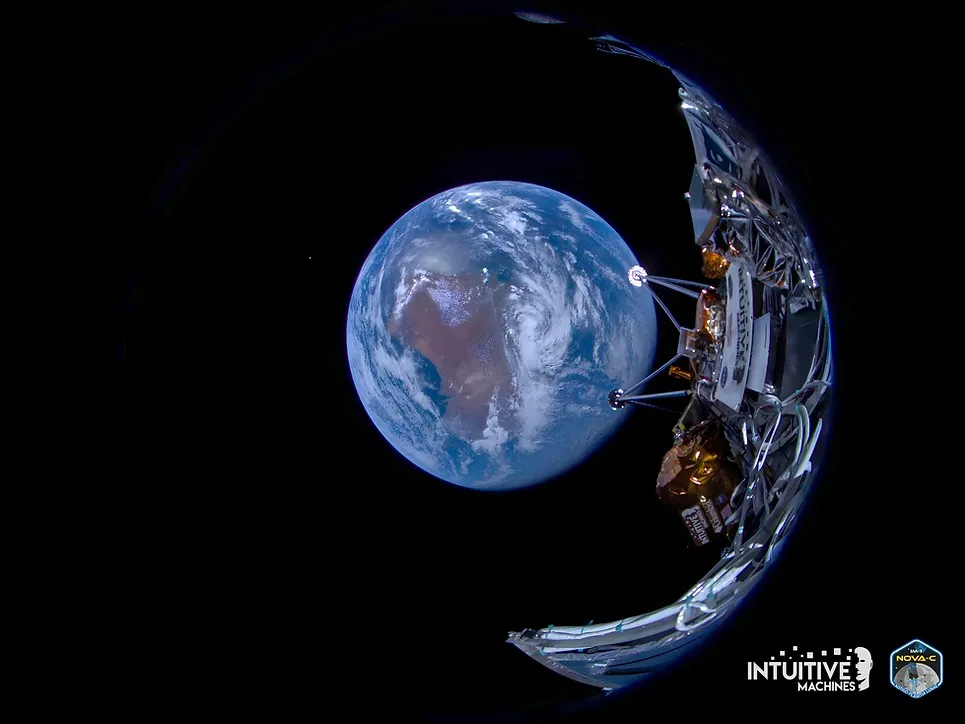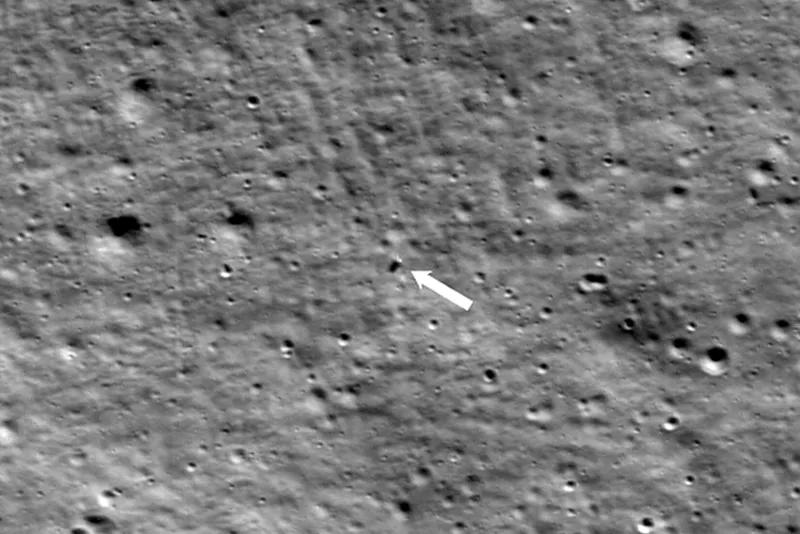The cause of the Odysseus spacecraft’s failed lunar touch down has now been discovered: it broke its leg during the landing.
The spacecraft, built by private spaceflight company Intuitive Machines, initially touched down on the Moon on 22 February, but lost contact with Earth soon after.

When mission control re-established communications, it became apparent the lander was tipped at an angle.
Using data from the spacecraft to analyse the landing, the team for Intuitive Machines discovered that the spacecraft had come down faster and harder than expected.
During the resulting skid, Odysseus snapped one of its legs.
An image has been released showing the Odysseus lander on the surface of the Moon with its broken leg.

What went wrong with Odysseus Moon landing?
Problems began before Odysseus even left Earth, when a safety switch on the spacecraft’s laser landing navigation system was left in the 'OFF' position.
This forced Intuitive Machines to use one of the experiments onboard – NASA’s Navigation Doppler Lidar – to conduct the landing instead.
However, the last-minute substitution meant there were several issues with its integration.
The altimeter didn’t function properly, leaving Odysseus unable to ascertain how far it was from the surface.
The spacecraft came down slightly short of its intended landing area on the Moon, where the terrain was higher.
This meant the lander hadn’t slowed down as much as it should have, so landed significantly harder than expected.

The spacecraft skidded across the lunar surface, snapping one of the leg struts in the process.
Like many lunar landers, Odysseus has long thin legs and wide flat feet.
The Moon’s low gravity means the legs don’t need to be as strong to support the spacecraft’s weight as they would on Earth, and slimming them down helps reduce the mass of the lander.
Unfortunately, this makes them more fragile and susceptible to damage.
The feet are wide to spread the weight of the lander, because the Moon is covered in a soft layer of dust, called regolith, which spacecraft can sink into.
In this case, though, it also made them more likely to snag on the uneven terrain.

How has being tipped over affected Odysseus?
Odysseus’s unexpected angle meant the spacecraft’s high-gain antenna was pointed away from Earth, and so the team has had to use the low-gain backup.
Low-gain antennas are omni-directional but are also much slower, meaning it took much longer to download Odysseus’s data and images than planned.
Fortunately, the solar panels were able to get enough light from the Sun to charge the spacecraft’s batteries for several days.
In addition, the only payload on the ground-facing side was a static art project, allowing the spacecraft’s experiments to complete many of their intended experiments.
As the Sun has moved across the sky, the solar panel output has dropped and Odysseus will eventually need to switch to using battery power.
This is expected to last 10-20 hours.

In a conference on 28 February, Intuitive Machines stated they expected to switch over to battery power that day, but as of writing they had yet to confirm if this had happened.
Eventually Odysseus will be put into sleep mode to conserve power through the lunar night.
Intuitive Machines will ping the spacecraft three weeks later, when the Sun is back overhead in an attempt to reconnect with the lander.
However, the spacecraft hasn’t been designed to survive the night, so changes of resuming contact are slim.
